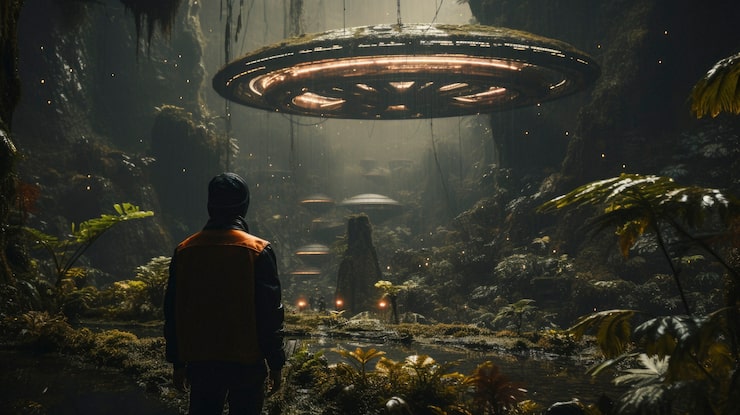classic science fiction films have fascinated audiences for decades, blending human imagination with futuristic visions that push the limits of storytelling. These movies do more than entertain; they challenge our view of technology, human nature, and the unknown universe. From early black-and-white gems to groundbreaking modern classics, science fiction cinema has built a legacy that continues to influence filmmakers and audiences across the globe.
The Dawn of Classic Sci-Fi Cinema
The history of classic science fiction films can be traced back to the early twentieth century when filmmakers experimented with visual effects and otherworldly ideas. Audiences were introduced to imaginative storytelling that blended fantasy with scientific speculation. These films captured curiosity at a time when technology was rapidly changing, and they inspired dreams of space travel, robotics, and futuristic societies.
When viewers first encountered stories that depicted alien invasions or dystopian futures, they were not just watching fiction; they were seeing reflections of human hopes and fears during uncertain times. The Cold War, the space race, and industrial advancements all shaped the themes these films explored.
Iconic Titles That Defined the Genre
One of the earliest influential titles was Metropolis, a German masterpiece from 1927 that depicted a futuristic city divided between wealthy elites and struggling workers. Its groundbreaking visual style set the tone for many science fiction films that followed.
Later, Hollywood embraced the genre with movies like The Day the Earth Stood Still, a story about alien visitors warning humanity about its destructive nature. This film was particularly powerful during the tense post-war years when the world grappled with nuclear fears.
Forbidden Planet brought Shakespeare’s The Tempest into outer space, blending human drama with futuristic technology. It introduced audiences to the concept of interstellar travel and artificial intelligence at a time when such ideas were still science fiction dreams.
As the genre evolved, directors explored themes of paranoia and human survival. Invasion of the Body Snatchers played on fears of conformity and loss of individuality, resonating with audiences during the height of Cold War anxiety.
Then came 2001: A Space Odyssey, a film that redefined science fiction as high art. Directed by Stanley Kubrick, it combined dazzling visuals with philosophical depth, examining humanity’s place in the universe. Few films have achieved such a balance of spectacle and meaning.
The Space Adventure Era
The late 1970s brought an explosion of classic science fiction films that leaned toward action and adventure while maintaining the philosophical roots of the genre. Star Wars: A New Hope changed cinema forever, introducing audiences to a galaxy filled with heroes, villains, and epic battles between good and evil. Though fantastical, its use of futuristic technology and alien worlds cemented it as part of the sci-fi legacy.
Close Encounters of the Third Kind provided a different perspective, focusing on humanity’s first contact with extraterrestrial life in a more emotional and spiritual way. It showcased how science fiction could be both visually spectacular and deeply moving.
During this period, Ridley Scott introduced two landmark films: Alien, a terrifying blend of horror and sci-fi, and Blade Runner, a dystopian vision exploring identity, humanity, and artificial intelligence. Both titles remain influential and are still studied by filmmakers for their themes and visual artistry.
Exploring Dystopias and Human Nature
The 1980s continued the legacy with films that reflected anxieties about the future. The Terminator showcased a world threatened by artificial intelligence, tapping into fears about technology spiraling out of control. With its blend of action and cautionary storytelling, it became a defining classic.
On the other hand, E.T. the Extra-Terrestrial offered a heartwarming take on alien life. Instead of focusing on fear and invasion, it emphasized friendship, compassion, and the innocence of childhood. Its cultural impact made it one of the most beloved science fiction films ever created.
Another standout from the decade was Back to the Future, which explored time travel with humor, creativity, and a sense of adventure. It inspired audiences to think about the possibilities of altering history and how personal choices shape the future.
Influence on Modern Cinema
The impact of these classic science fiction films is still evident today. They laid the foundation for current blockbusters and streaming series that dominate global entertainment. Concepts like time travel, artificial intelligence, dystopian societies, and interstellar exploration continue to drive the stories we watch today.
Modern directors often pay homage to these classics, either through visual references, thematic parallels, or reboots. For instance, Blade Runner 2049 revisited the world of replicants while honoring the atmosphere of the original. Similarly, the Star Wars saga continues to expand with new films and shows, proving the timeless appeal of its universe.
Cultural and Philosophical Impact
Science fiction has always been more than entertainment. These films reflect cultural anxieties, technological hopes, and philosophical questions about existence. By imagining futures filled with robots, space travel, and alien civilizations, filmmakers ask audiences to consider what it means to be human.
For example, 2001: A Space Odyssey forced viewers to confront humanity’s relationship with technology, while Invasion of the Body Snatchers examined fears of losing individuality in a conformist society. Even lighter films like Back to the Future sparked conversations about responsibility, time, and the consequences of human actions.
Why They Remain Timeless
The enduring appeal of classic science fiction films lies in their ability to mix spectacle with substance. They dazzle with futuristic visuals while delivering stories that resonate across generations. Whether through thrilling battles in space or intimate tales of human connection, they continue to inspire audiences to dream, question, and explore.
Every decade produces new entries into the science fiction canon, but the classics remain untouchable for the way they pioneered the genre. They remind us that cinema is not just about entertainment—it’s about imagining what the world could become.
Read also:

